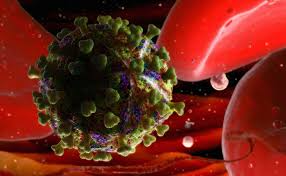Source:
Jessica Conway has spent her career studying patterns. Initially, she probed the patterns that form in vibrated fluid layers. But she quickly turned her attention and modeling skills to epidemiology and understanding the patterns seen in disease data, such as how the timing of vaccination influences the severity of a flu season. Conway and her group have now developed a model that predicts if and when the HIV virus will rebound if someone stops taking their medication. Speaking in early January at the Dynamic Days conference in Hartford, Connecticut, she said the model could help inform efforts to find a so-called functional cure, where the disease is kept below detectable levels without the need for continued drug intervention.
“Our aims are modest,” Conway says. “We don’t want to go to a clinician and say, ‘do this.’ Rather we want to generate hypotheses and make testable predictions as to what mechanisms might delay or control viral rebound.”
HIV is a disease of the immune system. The disease infects white blood cells, known as CD4 cells, and then uses the machinery of these cells to replicate and spread through the body. Antiretroviral therapies disrupt this cycle by stopping the virus from replicating. But the drugs are not a cure. Typically, when a person living with HIV stops taking their medication, the virus starts to replicate again, and the amount of HIV in the blood (the viral load) jumps back up. There is significant variability in the timing of this rebound, which can take from days to years. In fact, two studies, one in France and the other in the US, identified some HIV sufferers whose viral load never rebounded. Conway wanted to see if she could explain the variability in rebound times.
Conway’s model predicts an individual’s viral state at future times, given certain initial medical indicators. Her approach is based on a standard model of viral dynamics, which captures the infection and spreading of the virus via CD4 cells through a series of coupled differential equations. But Conway’s version has two important modifications. First, she added in the effects of so-called latently infected cells. These are infected cells that may lie dormant for days, months, or years and then suddenly wake up and start spreading the disease. If a person with HIV stops taking their drugs, these latently infected cells can cause the infection to rebound. She also included the impact of “killing” cells, which destroy infected cells and are meant to mimic the natural immune response. She then ran the model, varying parameters such as the efficacy of the killing cells and the number, or “reservoir size,” of latent cells in the body.
In 2015, Conway succeeded in predicting three medically observed outcomes from a single rebound model. She found that rebound occurs below a certain killing rate, while rebound is avoided when killing rates are high enough and latent reservoirs are sufficiently small. Finally, a certain combination of inputs led to a third state called elite control, where an infected individual keeps the disease at bay without ever needing medication.
More recently, Conway has also captured the variability in observed viral rebound times using a simplified version of the model, which predicts the distribution of rebound times for a group. The essential assumption is that the activation rate of the latent cells—when they wake up and start producing virus—decays exponentially in time. “An exponentially decaying rate does a great job at capturing the short and long delays,” Conway says. “It captures them a lot better than we anticipated.” But Conway notes that this behavior is still under investigation and the results have yet to be vetted by peer review.
Now that Conway has a model that can replicate a diversity of HIV rebound scenarios, she hopes the information could be used by doctors to better plan clinical trials that work toward a functional cure for HIV. For example, her model predicts that if rebound occurs, it should happen within 1 to 4 weeks for 90% of people with HIV. That information could help determine how soon a person should get tested after stopping therapy. The model could also be used to inform treatment strategies that aim to avoid rebound. For example, knowing that a small latent reservoir is key to stopping the virus from rebounding, clinicians might monitor biomarkers associated with an individual’s reservoir to determine how, when, or if the person should be taken off their drugs.
